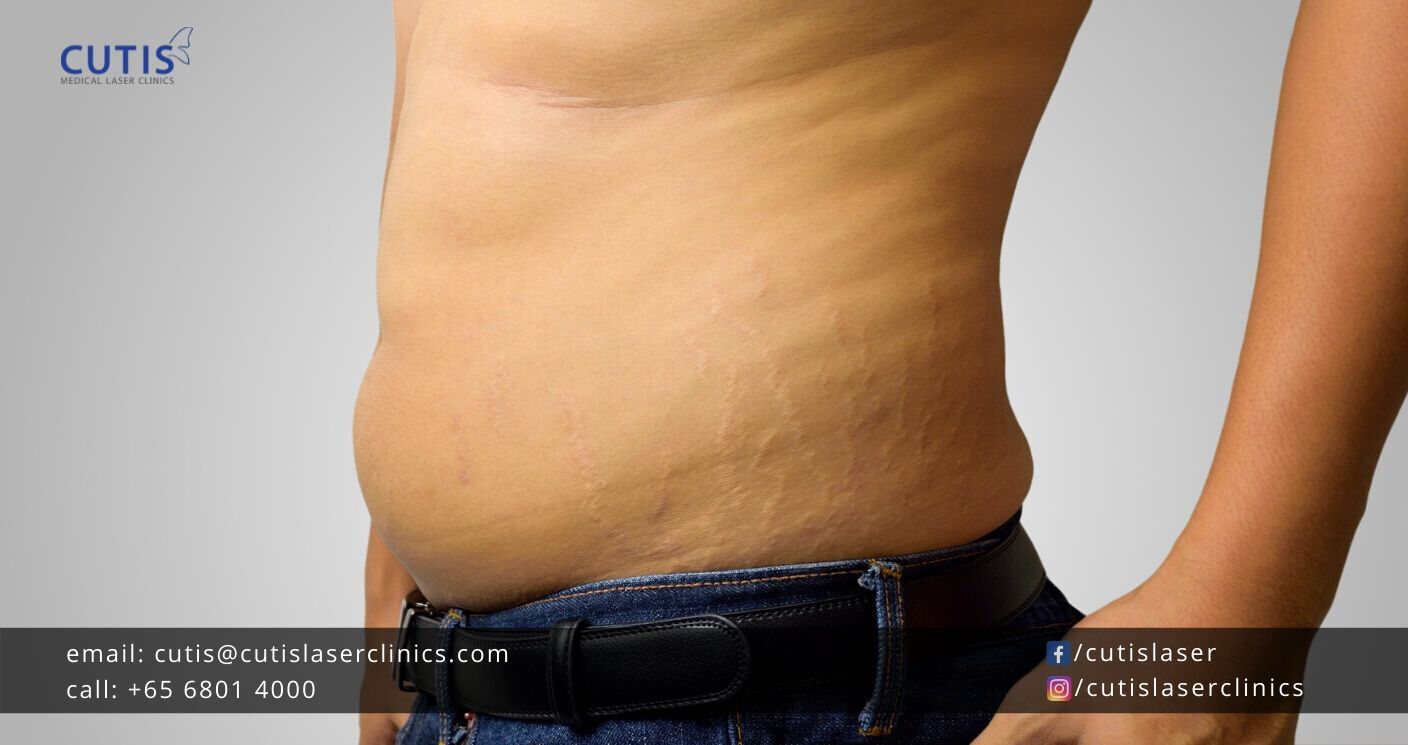 Although stretch marks are most likely to occur in women, men also get them. Many factors affect their occurrence, but the most common are body growth spurts during puberty. There is also a genetic link, so you’re most likely to get stretch marks if someone in your family has had them.
Although stretch marks are most likely to occur in women, men also get them. Many factors affect their occurrence, but the most common are body growth spurts during puberty. There is also a genetic link, so you’re most likely to get stretch marks if someone in your family has had them.
Why do stretch marks appear?
The skin is naturally elastic, but rapid stretching or growth can lead to internal tears. This tearing enables the skin’s deeper layers to show through, resulting in scars that are often referred to as stretch marks.
Other factors that contribute to the appearance of stretch marks in men include:
- Rapid weight gain and loss
- Bodybuilding or rapid muscle growth
- Adrenal diseases like Marfan syndrome and Cushing’s syndrome
- Prolonged use of corticosteroid creams and lotions (this reduces collagen levels in the skin)
Where do stretch marks commonly occur in men?
In most men, stretch marks tend to occur in areas where muscle growth or weight gain is common. These include the back, shoulders, buttocks, calves, or thighs. Men who put on a lot of weight for a short amount of time are likely to get stretch marks.
Physically active men, especially bodybuilders and weightlifters, typically develop these lines and streaks on the skin. This is mainly due to rapid increases in weight or muscle tissue due to bodybuilding or working out.
Is it possible to prevent stretch marks?
Not always, since hormones and genetics can play a part in their development. It is, however, possible to reduce your chance of developing stretch marks by keeping healthy weight without rapid weight gain/loss. This helps minimize skin stretching, which can raise your risk of having these lines and streaks.
Can you make stretch marks less noticeable?
There are ways to make stretch marks less noticeable, but do take note that many of these techniques offer short-lived results. Some may also have negative effects to your skin’s long-term health.
Some people use sunless tanners to conceal or camouflage stretch marks. Do take note, however, that this isn’t the case with sun tanning or the use of tanning beds. This is because stretch marks don’t tan, which only makes them more noticeable. The UV rays, furthermore, can damage the skin and worsen the appearance of stretch marks.
There are also those who use body makeup (that matches the skin tone) to cover the marks. Some of these cover-up products are also water-resistant, but then again they may not be the best option if you’re planning to spend most of your time in the water.
Is there a way to get rid of stretch marks?
While some creams and lotions claim to remove stretch marks, most don’t actually work. Many of these skin products are also expensive. If you’re bothered with your stretch marks, it is best to get the help of a skin or aesthetic doctor for treatment recommendations that can reduce their appearance.
Acoustic Shockwave therapy is one common aesthetic treatment that can help improve their appearance. This works by delivering acoustic waves into the body, which cause pressures and vibrations in the connective tissues. These help stimulate the formation of new collagen to make skin firmer and more elastic.
Microneedling with Dermapen is another option. This works by creating thousands of tiny needle punctures in the outer layer of the skin. This aesthetic treatment breaks up uneven scars tissues, as well as stimulates the growth of new ones. It can help treat both old and new stretch marks.
Cutis Laser Clinics in Singapore offers Microneedling and Acoustic Shockwave therapy. Contact our clinic today and schedule a consultation with our aesthetic doctor, Dr. Sylvia Ramirez, to improve your stretch marks or address your other skin and body concerns.
- If you would like to be an informed patient, please contact us at +65-6801-4000 or
hello@cutislaserclinics.com. - Cutis Medical Laser Clinics, 9 Scotts Road Pacific Plaza, Scotts Medical Center #08-07, Singapore – 228210
+65-6801-4000 - hello@cutislaserclinics.com
